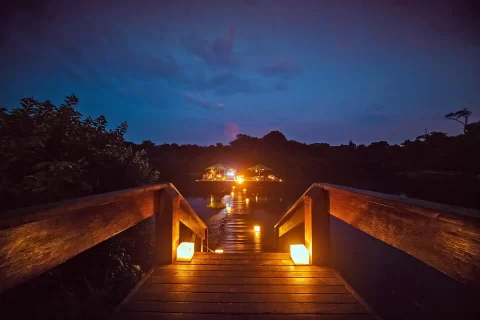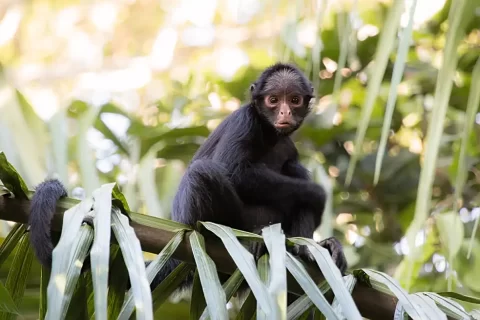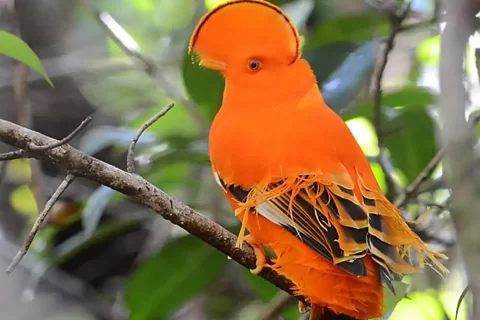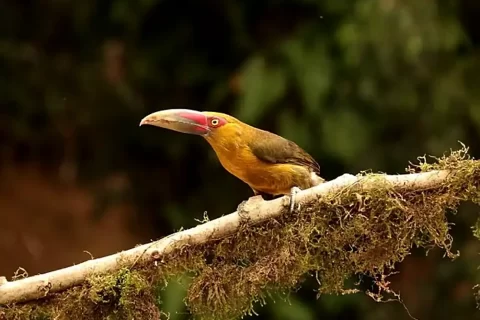Best time of year:
April – November
Duration:
13 days Main Tour + 6 day Extension
Difficulty:
Easy, with one or two more difficult hikes.
Accommodations:
En-suite rooms throughout the tour.
Starts In: Belo Horizonte
Ends in: Belo Horizonte
Tour Overview
This is one of our favourite tours. The spectacular state of Minas Gerais offers some of the country’s best birding and top mammals, against a backdrop of stunning scenery, amiable people, and excellent food (the famed country cooking of Minas Gerais – comida mineira – is well-known throughout Brazil). The Treasures of Minas Gerais tour is comprised of two parts: first, our two week Best of Minas itinerary, which spends multiple nights in each of the three most famous birding sites in the state: the fabulous Serra da Canastra and Serra do Cipó national parks, which between them protect some of the best upland cerrado in the country; and the truly charming Caraça monastery, where rocky campo rupestre cerrado meets Atlantic rainforest. Unlike most trips to the region, we also include a couple of lesser-known sites to target rarities not easily found elsewhere. These spots include the Pompeu area where we should see a couple of secretive grassland rails, the Rufous-faced and Ocellated Crakes; and forest patches near Catas Altas where we target Rio de Janeiro Antbird, Southern Bristle-Tyrant, Vinaceous-breasted Parrot, and Three-toed Jacamar.
BLUE-EYED GROUND-DOVE EXTENSION (6 DAYS)
The 6-day Blue-eyed Ground-Dove extension takes us to the northern reaches of the state, where we bird in the dry forests and caatinga at the Lapa Grande and Cavernas do Peruaçu parks looking to track down a number of scarce endemics including Moustached Woodcreeper, Bahian Nighthawk, Great Xenops, White-browed Antpitta, Minas Gerais Tyrannulet, Reiser’s Tyrannulet, São Francisco Sparrow and Scarlet-throated Tanager. We then continue on to the northern terminus of the Espinhaço mountain range, site of the recent re-discovery of the charming Blue-eyed Ground-Dove. With fewer than 25 individuals known to exist in the world, this is one of Brazil’s most threatened species — our visits contribute directly to the conservation of the species in the form of contributions we make to support the private reserve established to protect the birds, and indirectly through the tourism dollars we leave behind in the humble corner of the state where the doves have been found. The Botumirim area has a strong supporting cast of birds including Horned Sungem, Silvery-cheeked Antshrike, Stripe-backed Antbird, Narrow-billed Antwren, Russet-mantled Foliage-gleaner, Cinereous Warbling-Finch and Blue Finch.
Itinerary
TREASURES OF MINAS GERAIS: THE BEST OF MINAS (13 DAYS)
Day 1: Arrival in Belo Horizonte. Arrival in Belo Horizonte, the capital city of the state of Minas Gerais.
Night in Belo Horizonte.
Day 2: Lagoa Pampulha and travel to Serra da Canastra. Highlights: Southern Pochard, Toco Toucan, Red-legged Seriema.
Night in São Roque de Minas.
Day 3: Serra da Canastra, lower range. Highlights: Brazilian Merganser, Golden-capped Parakeet, Streamer-tailed Tyrant.
Night in São Roque de Minas.
Day 4 & 5: Serra da Canastra, upper range. Highlights: Giant Anteater, Brasilia Tapaculo, Collared Crescentchest, Cock-tailed Tyrant, Ochre-breasted Pipit, Black-masked Finch, Blue Finch.
Nights in São Roque de Minas.
Day 6: Travel to Pompéu. Highlights: Rufous-faced Crake.
Night in Pompéu.
Day 7: Pompéu and travel to Catas Altas. Highlights: Ocellated Crake, Rufous-faced Crake.
Night in Catas Altas.
Day 8: Piracicaba Valley. Highlights: Three-toed Jacamar, Rio de Janeiro Antbird, Southern Bristle-Tyrant.
Night in Catas Altas.
Day 9: Piracicaba Valley and Caraça. Highlights: Swallow-tailed Cotinga, Maned Wolf.
Night at Caraça Monastery.
Day 10: Caraça monastery. Highlights: Hyacinth Visorbearer, Serra Antwren, Rock Tapaculo, Gilt-edged Tanager, Pale-throated Serra Finch.
Night at Caraça Monastery.
Day 11: Caraça and travel to Serra do Cipó. Highlights: Horned Sungem, Checkered Woodpecker, Cinereous Warbling-Finch.
Night in Serra do Cipó.
Day 12: Lapinha da Serra and Serra do Cipó. Highlights: Cipó Canastero, Cipó Cinclodes.
Night in Serra do Cipó.
Day 13: Serra do Cipó and return to Belo Horizonte. Highlights: Silvery-cheeked Antshrike, Saffron-billed Sparrow.
End of main tour.
NORTHERN MINAS GERAIS: BLUE-EYED GROUND-DOVE EXTENSION (6 DAYS)
Day 1: Arrival in Belo Horizonte and flight to Montes Claros.
Night in Montes Claros.
Day 2: Lapa Grande State Park and travel to Itacarambi. Highlights: São Francisco Sparrow, Minas Gerais Tyrannulet, Caatinga Black-Tyrant, Reiser’s Tyrannulet, Dry-Forest Sabrewing, Bahian Nighthawk.
Night in Itacarambi or Januária.
Day 3: Cavernas do Peruaçu National Park. Highlights: Moustached Woodcreeper, Ash-throated Casiornis, White-naped Jay, Great Xenops, White-browed Antpitta, Stripe-backed Antbird, Caatinga Antwren.
Night in Itacarambi or Januária.
Day 4: Peruaçu and drive to Botumirim.
Night in Botumirim.
Day 5: Blue-eyed Ground-Dove. Highlights: Blue-eyed Ground-Dove, Horned Sungem, Hyacinth Visorbearer, Black-bellied Antwren, Russet-mantled Foliage-gleaner, Pin-tailed Manakin.
Night in Botumirim.
Day 6: Botumirim and return to Montes Claros. Highlights: Ochre-cheeked Spinetail, Pale-bellied Tyrant-Manakin, Narrow-billed Antwren.
Night in Montes Claros.
Day 7: Departure.
End of tour.
Key Birds and Mammals
Iconic birds such as the Critically Endangered Brazilian Merganser, Greater Rheas, Red-legged Seriema, Toco Toucan, Hyacinth Visorbearer, Horned Sungem, Collared Crescentchest, Brasilia Tapaculo, a suite of fantastic flycatchers of open country such as Cock-tailed Tyrant, Sharp-tailed Grass-Tyrant, Streamer-tailed Tyrant, and Gray-backed Tachuri, the amazing Swallow-tailed Cotinga, Helmeted Manakin, and Black-masked Finch are amongst the birds we expect to see. Our days around Pompeu and Catas Altas aim to add Ocellated Crake, Rufous-faced Crake, Vinaceous-breasted Parrot, Three-toed Jacamar and Rio de Janeiro Antbird to the list. We have great chances to find two unique mammals: we’ll look for the bizarre Giant Anteater as it stalks across the vast savannas on the upper plateau of the Serra da Canastra; our efforts for the elegant Maned Wolf are likely to be less strenuous, as we will sit an evening vigil at the Caraça monastery where the wolves come to feed atop the steps to the nave!

















